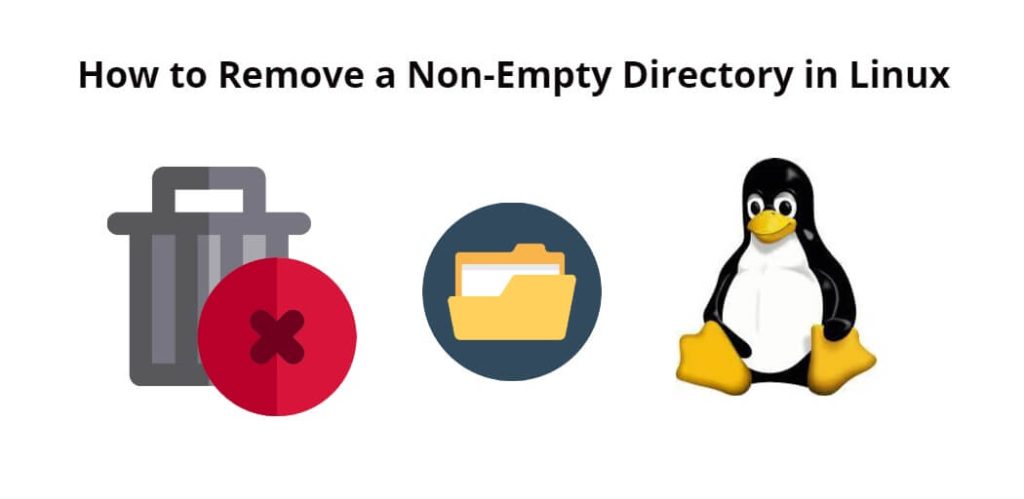To remove a non-empty directory and its subdirectories, files, etc., you can use the rm -r command with the -r option on the Linux command line. Additionally, You can also use two more commands to delete non-empty directories in linux, commands find directory_name -delete command or the rmdir --ignore-fail-on-non-emptydirectory_name command.
You should use the rm -r command on the Linux command line very carefully, it permanently deletes the directory and all its subdirectories, files, etc.
Here are some approaches to remove or delete non-empty directory in linux with a command line or terminal:
- Approach 1: Using the rm Command to Remove a Non-Empty Directory in Linux
- Approach 2: Delete a Non-Empty Directory in Linux Using the find Command
- Approach 3: Using the rmdir Command with the –ignore-fail-on-non-empty Option
Approach 1: Using the rm Command to Remove a Non-Empty Directory in Linux
To remove a non-empty directory in Linux, you can use the rm -r command. The rm -r command will delete the directory and all its subdirectories and files, you can use this command on command line:
rm -r directory_name
In the above command, the-r option tells the rm command to remove the directory recursively. This means that it will remove all the files and directories within the specified directory as well.
Approach 2: Delete a Non-Empty Directory in Linux Using the find Command
This is the one more highlighted command that you can use to delete non empty directory, this find directory_name -delete Linux command, you can use it on command line like this:
find directory_name -delete
This command will find all the files and directories within the specified directory and delete them, including the directory itself.
Method 3: Using the rmdir Command with the –ignore-fail-on-non-empty Option
The best alternative of the rm -r or find -delete commands, rmdir --ignore-fail-on-non-empty directory_name removes directories that are not empty, you can use the following commands on Linux command line:
rmdir --ignore-fail-on-non-empty directory_name
The above command will remove the specified directory and all its contents. However, if any files or subdirectories within the specified directory are read-only, the rmdir command will fail to remove them.
Here are some frequently asked answers on How to Remove a Non Empty Directory in Linux:
Q: Will rm -r prompt you to confirm the deletion of the directory and its content?
Answer: The rm -r command is used at the command line, at that time confirmation prompt will not open.
Q: Can I recover a deleted directory and its contents in Linux?
Answer: If a directory is deleted using the rm -r command, it cannot be recovered.
Q: Can I remove a non-empty directory without deleting its contents?
Answer: No, it is not possible to remove, If you delete the directory, its subdirectories, files, and everything inside the directory will be deleted.
Q: How can I remove a non-empty directory and its contents with confirmation prompts?
Answer: You can use the “rm -ri” command to delete a non-empty directory and its subdirectories, files, etc with confirmation prompts. “i” option shows the confirmation prompt on command line.
Q: How to enable confirmation alert when using rm command to delete files / folders?
Answer: You can use “-i” option with rm command, ” -i”option will open a confirmation prompt before deleting directories or files on command line.
Q: What happens if I try to remove a non-empty directory without using the “-r” option?
Answer: If you try to remove a non-empty directory without using the “-r” option, you will get an error message stating that the directory is not empty, and you will not be able to remove it.
Q: Can I remove a non-empty directory located on a network drive?
Answer: Yes, you can remove a non-empty directory located on a network drive using the same “rm -r” command that you would use for a directory located on your local machine.
Conclusion
Removing a non-empty directory in Linux can be accomplished using various methods. The most common methods are using the rm command with the -r option, the find command with the -delete option, or the rmdir command with the --ignore-fail-on-non-empty option.
